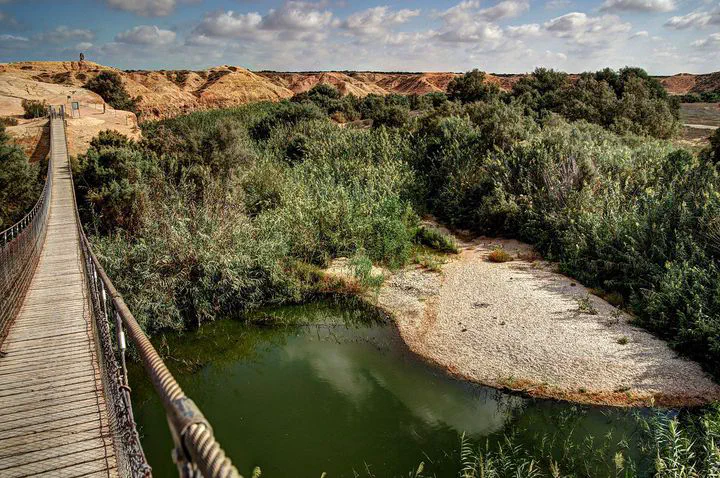Late Pleistocene hydroclimatic change in the Negev Desert
 Image credit: M. Boesch
Image credit: M. BoeschThe lower Besor basin forms part of a key transitional ecotone between the desert and Mediterranean regions of the southern Levant where Palaeolithic human groups moved through and interacted in diverse ecosystems, likely in connection with climatic oscillations and subsequent changes in landscape structure and resource availability. In this project we seek to characterize shifts in water availability and the plant biome at the site of B60, an Upper Palaeolithic locality in the Besor basin. Using distribution patterns and stable isotope analysis (δ13C, δ2H) of plant wax n-alkanes preserved in the sediments of the site we will obtain information on the nature of water bodies and plant types present in the local ecosystem. Using high-resolution sampling we will generate a record of palaeohydrological and landscape change contextualizing the Upper Palaeolithic occupation and surrounding deposits. We hypothesize that local water and resource availability played a role in shaping human occupation patterns of the Besor ecotone.
This project aims to achieve a nuanced record of the paleoclimate and paleoenvironment at site B60, excavated in 2022 as part of a regional project, and highlight local vs. regional reconstructions of diachronic environmental changes. Characterizing the presence of local permanent or seasonal water bodies within the lower Besor basin has implications to for the nature of subsistence and mobility of past prehistoric societies. These local eco-systems play an important role within the region, and at times have a strong influence on resource availability independent of overall regional and global climatic changes. The wider implication of the expected high-resolution paleo-ecological record will allow us for the first time to compare local nuanced changes with the regional and global diachronic climatic and environmental shifts. This is important in defining favorable localities that would have a higher carrying capacity with favorable conditions in contrast to the expected environment based on regional models.
The results of preliminary survey and excavation work in the lower Besor Basin is published in Antiquity.